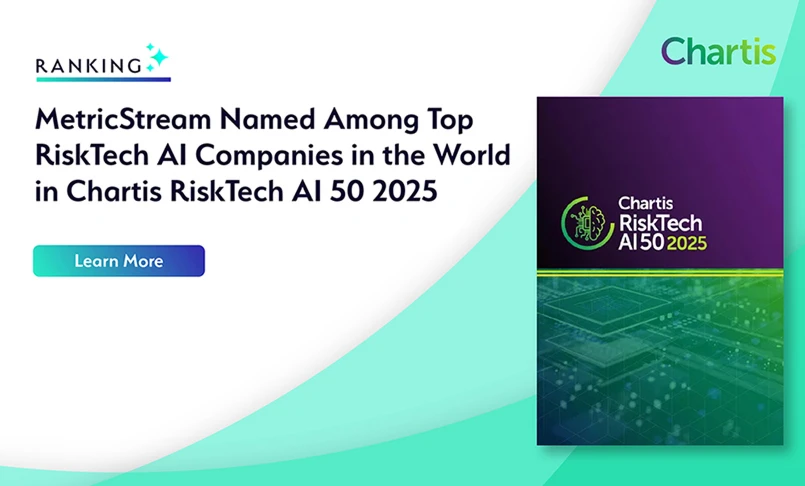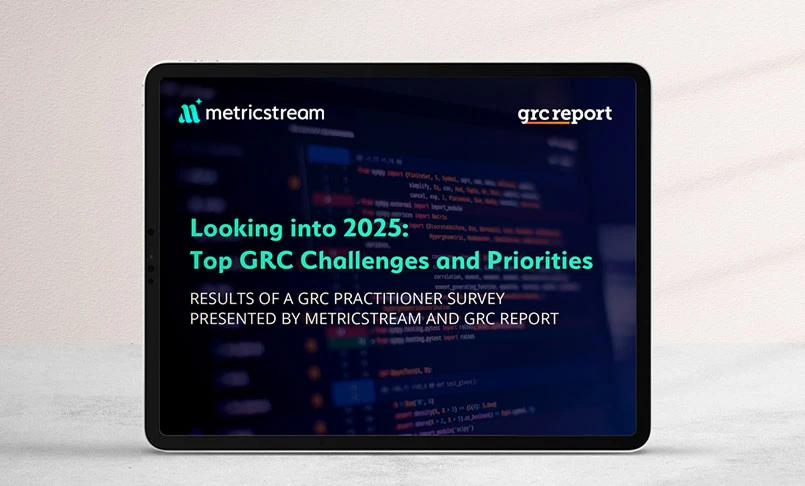The Top 5 Operational Risk Management (ORM) Tools For 2026
- Compliance Management
- 01 August 25

Introduction
In today’s dynamic risk environment—ranging from cyberattacks to supply chain disruptions—a robust ORM tool is essential for maintaining resilience and compliance. This guide explores why ORM platforms matter, what features to prioritize, key providers, benefits, challenges, performance metrics, and emerging industry trends.
In today’s dynamic and unpredictable business landscape—marked by cyberattacks, supply chain disruptions, regulatory pressures, and geopolitical instability—organizations face operational risks that can quickly escalate into major crises. A robust Operational Risk Management (ORM) tool is no longer optional; it’s a strategic necessity for maintaining resilience, ensuring business continuity, and meeting compliance requirements.
This comprehensive guide explores everything you need to know about ORM platforms: why they matter in the modern enterprise ecosystem, the core features to look for, top solution providers, measurable benefits, implementation challenges, key performance indicators, and emerging trends such as AI-driven automation and predictive analytics. Whether you’re a compliance officer, CRO, or business leader, this guide will help you understand how ORM tools can transform risk from a reactive burden into a proactive advantage.
Why Operational Risk Management Tools Matter
Organizations face countless operational threats, ranging from system failures to data breaches. ORM tools equip businesses with centralized capabilities to identify, assess, and mitigate these risks effectively. They streamline processes, ensure compliance, and empower strategic decision-making.
Here are 5 key reasons why ORM tools are essential for today’s risk-heavy business environment:
- Centralize risk identification across all domains—IT, finance, legal, operations—to create a unified risk portfolio.
- Automate repetitive processes like data collection, risk scoring, and report generation to eliminate manual bottlenecks and reduce human error.
- Ensure regulatory alignment across evolving frameworks such as ISO 31000, SOX, GDPR, and NIST by providing templated controls and audit-ready documentation.
- Preserve financial integrity by proactively identifying emerging threats—such as fraud, system disruptions, or market volatility—to prevent losses.
- Marry strategic agility with safety by quantifying and mitigating risk in real time, enabling resilient and informed business maneuvering.
What to Look For in ORM Tools
Choosing the right ORM solution starts with understanding your organization’s unique risk landscape, regulatory demands, and internal processes. The ideal tool should support comprehensive risk identification, assessment, control monitoring, and reporting—all while integrating seamlessly with your existing systems.
Below is an overview of the 5 critical capabilities to assess:
- Risk Register & Relationship Mapping: A unified repository that ties risks to key assets, processes, controls, and stakeholders.
- Integrated Risk Assessment: Support for scoring, Key Risk Indicators (KRIs), and analytical trend insights
- Control Testing & Issue Management: Tools to evaluate control effectiveness and manage issue remediation.
- Reporting & Analytics: Robust dashboards, scenario modeling, and heat maps for informed decision-making.
- Integration & Usability: Ease of connecting with existing systems (ERP, CRM, SIEM) and intuitive user experience.
Top 5 Operational Risk Management Tools
Several market-leading ORM platforms offer distinctive features suited to various organizational needs, including integrated GRC capabilities and AI-driven analytics. Here are the top 5 operational risk management tools organizations can utilize:
MetricStream
MetricStream is a leading enterprise GRC platform that unifies operational risk, enterprise risk, audit, compliance, cyber risk, and third-party risk into a centralized ecosystem. It’s designed for large, complex organizations looking for end-to-end risk visibility and control.
Key Features:
- Centralized Risk Repository: Maintains a unified risk library with standardized attributes like risk categories, owners, hierarchies, controls, and linked policies, ensuring consistency across the organization.
- Advanced Risk Assessments: Supports both qualitative and quantitative assessments with inherent and residual risk scoring, configurable weightings, and multi-dimensional evaluations.
- AI-Driven Analytics & Dashboards: Uses machine learning and generative AI to uncover anomalies, duplicates, and control gaps, while providing real-time visual insights via heatmaps and executive dashboards.
- Issue & Remediation Management: Automates issue tracking—from root cause analysis to corrective action assignment and closure—with alerts to ensure timely resolution.
- Ecosystem Integration: Offers extensive integration options with ERP, HR, cybersecurity, and BI systems through hundreds of pre-built APIs and connectors.
MetricStream is best suited for large enterprises seeking a comprehensive and intelligent platform for managing risk holistically across all business functions.
RSA Archer
Key Features:
- Modular Architecture: Choose from a wide array of modules focused on enterprise risk, compliance, IT & security risk, third-party governance, and audit management.
- Custom Dashboards & Reporting: Enables users to build scenario-based dashboards and custom heatmaps for tracking risk trends and metrics.
- Risk & Control Assessment Tools: Includes templates for popular frameworks and tools for dynamic risk assessment and remediation tracking.
- Enterprise Scalability: Designed to handle high volumes of data and complex risk hierarchies, making it suitable for global organizations.
LogicGate Risk Cloud
With its no-code, cloud-native ORM solution, LogicGate Risk Cloud can be considered as a solution for mid-sized and growing organizations seeking quick deployment and agile customization without reliance on IT.
Key Features:
- Graph Database & Logic Modeling: Enables users to model complex relationships between risks, processes, and controls for better visibility.
- Quick-Start Risk Scoring: Comes with out-of-the-box templates for scoring inherent and residual risks, speeding up onboarding.
- Quantify Module: Uses Monte Carlo simulations and probabilistic modeling to estimate the financial impact of risks under different scenarios.
- Workflow Automation: Drag-and-drop workflow builder allows for fast automation of approvals, escalations, and issue resolutions.
RiskWatch
RiskWatch provides compliance and risk tracking. This cloud-based ORM tool is optimized for regulated industries such as healthcare, manufacturing, and financial services.
Key Features:
- Real-Time Compliance Monitoring: Continuously checks for compliance with key standards like GDPR, HIPAA, and ISO 27001, and raises alerts when thresholds are exceeded.
- Built-In Audit Templates: Industry-specific templates automate evidence gathering and can reduce audit preparation time by up to 60%.
- Vendor Risk Management: Offers integrated workflows for third-party onboarding, assessments, and ongoing monitoring.
Fusion Risk Management
With its broad platform, Fusion Risk Management combines operational risk with business continuity, disaster recovery, and incident response.
Key Features:
- Built-In Scenario Planning: Simulates real-world disruptions like cyber incidents, vendor failures, and natural disasters to test preparedness and recovery.
- AI-Enhanced Insights: Uses machine learning to correlate incidents and threat data, identifying potential risks before they escalate.
- Integrated Incident Pillar: Links incidents directly to risk causes, controls, and performance metrics for centralized visibility and tracking.
- Executive Dashboards: Offers real-time updates through tailored dashboards that display process-level risks and compliance statuses.
Benefits of Using an ORM Tool
Implementing an ORM platform delivers tangible value across performance, compliance, and organizational culture. Here are the 5 key benefits of using an ORM tool:
- Accuracy & Efficiency: By automating processes like risk scoring, control testing, and KRI monitoring, ORM tools significantly reduce human error and free resources for more strategic activities.
- Rapid Incident Response: Integrated alert systems enable teams to detect anomalies—such as failed control checks or threshold breaches—and act swiftly, minimizing operational impact.
- Comprehensive Visibility: A centralized risk dashboard grants executives a complete view of risk exposure across business lines, allowing for more informed decision-making.
- Simplified Compliance: Built-in audit templates and evidence collection features reduce manual documentation effort, streamlining end-to-end compliance workflows for regulatory standards such as SOX, GDPR, or ISO 31000.
- Role-Based Accountability: Configurable dashboards and automated reminders ensure that each risk owner understands their responsibilities, promoting consistent oversight and timely remediation across teams.
Common Challenges in Implementing ORM Tools
Despite their promise, ORM tools also bring implementation hurdles, ranging from integration to user adoption. The following are the 5 main challenges in implementing ORM tools:
- Fragmented Technology Landscapes: Legacy systems and data silos can make integration difficult, limiting the ORM platform’s ability to consolidate risk data from across the organization.
- Cultural Resistance: Employees may resist adopting new risk workflows if there is limited leadership communication, insufficient training, or unclear benefits. Overcoming this resistance requires executive sponsorship and ongoing user engagement.
- Scalability Limitations: Without strong modular architectures or flexible configurations, some ORM solutions struggle to adapt as business complexity or data volume grows.
- Resource Constraints: Companies with tight budgets, limited staffing, or lack of executive support may struggle to complete full ORM implementations or maintain ongoing governance.
- Customization Fatigue: Highly tailored platforms can delay rollouts, introduce hidden dependencies, and require continued vendor support, increasing both cost and risk of disruption.
How to Measure Success When Implementing ORM Tools
To track ORM effectiveness, organizations should define measurable metrics aligned with strategic objectives. Here are 6 ways to measure whether your ORM tool is adding value to your organization:
- Risk Coverage Percentage: Measure the proportion of business processes, geographic units, and assets that are captured in the ORM system to monitor completeness of risk visibility.
- Mean Time to Resolution (MTTR): Track how long it takes to move incidents from detection through investigation and remediation, with an aim to continuously reduce response times.
- Control Effectiveness Rate: Regularly evaluate the percentage of controls that perform as expected in audits or tests, reflecting system reliability.
- Cost Efficiency Gains: Compare the organizational cost of managing risk manually versus via ORM automation to quantify efficiency savings and ROI.
- User Adoption Index: Monitor user activity, login frequency, and self-reported satisfaction scores to gauge acceptance and engagement with the system.
- Audit Preparedness Metrics: Track metrics like the time taken to gather evidence, the number of audit findings, or remediations during compliance reviews to demonstrate ORM effectiveness.
Trends Shaping the Future of ORM
The ORM landscape is evolving rapidly with emerging technologies and changing business needs shaping the future of operational risk. The following are 5 trends to watch for:
- AI-Powered Risk Intelligence: New ORM platforms are integrating machine learning to automatically detect anomalies by analyzing patterns across controls, incidents, and threshold breaches.
- Predictive and Prescriptive Analytics: Beyond monitoring current risk, advanced systems now offer “what-if” modeling and recommendation engines that suggest specific actions or resource adjustments.
- Embedded Risk Workflows: More businesses are embedding risk assessments directly into regular toolchains—such as ERP, procurement, and development pipelines—enabling risk checks within standard workflows.
- Modular Cloud-Native Architecture: Adoption of microservices and API-first ORM tools allows organizations to start with core functionality and expand as needed, avoiding unnecessary complexity and cost overhead.
- True Interoperability: Leading platforms increasingly support interoperability with ERP, CRM, SIEM, BPM, and identity systems—creating unified ecosystems that ensure timely risk data flows across tools.
Selecting the right ORM tool is a strategic decision that shapes your organization’s resilience, agility, and regulatory readiness. By focusing on key capabilities, understanding implementation hurdles, tracking performance, and embracing emerging trends, you can elevate ORM from a compliance necessity to a competitive advantage.
To learn how MetricStream’s Operational Risk Management can help, request a personalized demo today.
FAQs
What is an Operational Risk Management (ORM) tool?
An ORM tool helps businesses identify, assess, mitigate, and monitor risks related to internal processes, systems, people, and external events.
How do ORM tools differ from general risk management platforms?
ORM tools focus specifically on operational disruptions (e.g., system failures, fraud, supply chain issues) rather than strategic or financial risks.
Do ORM tools support real-time monitoring?
Yes, modern tools offer real-time dashboards, Key Risk Indicators (KRIs), and automated alerts for faster incident detection and response.
Are ORM tools only relevant for regulated industries?
No, while heavily used in sectors like finance and healthcare, ORM tools benefit any organization aiming to enhance resilience and reduce operational exposure.








